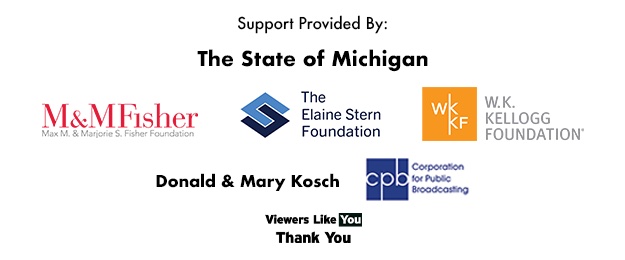Grades
Standard
Demonstrate command of the conventions of standard English grammar and usage when writing or speaking.
Apply the understanding that usage is a matter of convention, can change over time, and is sometimes contested.
Resolve issues of complex or contested usage, consulting references (e.g., Merriam-Webster’s Dictionary of English Usage, Garner’s Modern American English) as [...]
Demonstrate command of the conventions of standard English capitalization, punctuation, and spelling when writing.
Apply knowledge of language to understand how language functions in different contexts, to make effective choices for meaning or style, [...]
Vary syntax for effect, consulting references (e.g., Tufte’s Artful Sentences) for guidance as needed; apply an understanding of syntax to [...]
Determine or clarify the meaning of unknown and multiple-meaning words and phrases based on grades 11–12 reading and content, choosing [...]
Use context (e.g., the overall meaning of a sentence, paragraph, or text; a word’s position or function in a sentence) [...]
Identify and correctly use patterns of word changes that indicate different meanings or parts of speech (e.g., conceive, conception, conceivable).
Consult general and specialized reference materials (e.g., dictionaries, glossaries, thesauruses), both print and digital, to find the pronunciation of a [...]
Verify the preliminary determination of the meaning of a word or phrase (e.g., by checking the inferred meaning in context [...]
Use precise language, domain-specific vocabulary, and techniques such as metaphor, simile, and analogy to manage the complexity of the topic.
Establish and maintain a formal style and objective tone while attending to the norms and conventions of the discipline in [...]
Provide a concluding statement or section that follows from and supports the information or explanation presented (e.g., articulating implications or [...]
Write narratives to develop real or imagined experiences or events using effective technique, well-chosen details, and well-structured event sequences.
Engage and orient the reader by setting out a problem, situation, or observation and its significance, establishing one or multiple [...]
Use narrative techniques, such as dialogue, pacing, description, reflection, and multiple plot lines, to develop experiences, events, and/or characters.
Use a variety of techniques to sequence events so that they build on one another to create a coherent whole [...]
Use precise words and phrases, telling details, and sensory language to convey a vivid picture of the experiences, events, setting, [...]
Provide a conclusion that follows from and reflects on what is experienced, observed, or resolved over the course of the [...]
Produce clear and coherent writing in which the development, organization, and style are appropriate to task, purpose, and audience. (Grade-specific [...]
Develop and strengthen writing as needed by planning, revising, editing, rewriting, or trying a new approach, focusing on addressing what [...]
Use technology, including the Internet, to produce, publish, and update individual or shared writing products in response to ongoing feedback, [...]
Conduct short as well as more sustained research projects to answer a question (including a self-generated question) or solve a [...]
Gather relevant information from multiple authoritative print and digital sources, using advanced searches effectively; assess the strengths and limitations of [...]
Draw evidence form literary or informational texts to support analysis, reflection, and research.
Apply grades 11–12 Reading standards to literature (e.g., “Demonstrate knowledge of eighteenth-, nineteenth- and early-twentieth-century foundational works of American literature, [...]
Apply grades 11–12 Reading standards to literary nonfiction (e.g., “Delineate and evaluate the reasoning in seminal U.S. texts, including the [...]
Initiate and participate effectively in a range of collaborative discussions (one-on-one, in groups, and teacher-led) with diverse partners on grades [...]
Come to discussions prepared, having read and researched material under study; explicitly draw on that preparation by referring to evidence [...]
Work with peers to promote civil, democratic discussions and decision-making, set clear goals and deadlines, and establish individual roles as [...]
By the end of grade 11, read and comprehend literary nonfiction in the grades 11–CCR text complexity band proficiently, with [...]
Determine two or more central ideas of a text and analyze their development over the course of the text, including [...]
Analyze a complex set of ideas or sequence of events and explain how specific individuals, ideas, or events interact and [...]
Determine the meaning of words and phrases as they are used in a text, including figurative, connotative, and technical meanings; [...]
Analyze and evaluate the effectiveness of the structure an author uses in his or her exposition or argument, including whether [...]
Determine an author’s point of view or purpose in a text in which the rhetoric is particularly effective, analyzing how [...]
Integrate and evaluate multiple sources of information presented in different media or formats (e.g., visually, quantitatively) as well as in [...]
Delineate and evaluate the reasoning in seminal U.S. texts, including the application of constitutional principles and use of legal reasoning [...]
Analyze seventeenth-, eighteenth-, and nineteenth-century foundational U.S. documents of historical and literary significance (including The Declaration of Independence, the Preamble [...]
Write arguments to support claims in an analysis of substantive topics or texts, using valid reasoning and relevant and sufficient [...]
Write routinely over extended time frames (time for research, reflection, and revision) and shorter time frames (a single sitting or [...]
Introduce precise, knowledgeable claim(s), establish the significance of the claim(s), distinguish the claim(s) from alternate or opposing claims, and create [...]
Develop claim(s) and counterclaims fairly and thoroughly, supplying the most relevant evidence for each while pointing out the strengths and [...]
Use words, phrases, and clauses as well as varied syntax to link the major sections of the text, create cohesion, [...]
Establish and maintain a formal style and objective tone while attending to the norms and conventions of the discipline in [...]
Provide a concluding statement or section that follows from and supports the argument presented.
Write informative/explanatory texts to examine and convey complex ideas, concepts, and information clearly and accurately through the effective selection, organization, [...]
Grades
Standard
Demonstrate command of the conventions of standard English grammar and usage when writing or speaking.
Apply the understanding that usage is a matter of convention, can change over time, and is sometimes contested.
Resolve issues of complex or contested usage, consulting references (e.g., Merriam-Webster’s Dictionary of English Usage, Garner’s Modern American English) as [...]
Demonstrate command of the conventions of standard English capitalization, punctuation, and spelling when writing.
Apply knowledge of language to understand how language functions in different contexts, to make effective choices for meaning or style, [...]
Vary syntax for effect, consulting references (e.g., Tufte’s Artful Sentences) for guidance as needed; apply an understanding of syntax to [...]
Determine or clarify the meaning of unknown and multiple-meaning words and phrases based on grades 11–12 reading and content, choosing [...]
Use context (e.g., the overall meaning of a sentence, paragraph, or text; a word’s position or function in a sentence) [...]
Identify and correctly use patterns of word changes that indicate different meanings or parts of speech (e.g., conceive, conception, conceivable).
Consult general and specialized reference materials (e.g., dictionaries, glossaries, thesauruses), both print and digital, to find the pronunciation of a [...]
Verify the preliminary determination of the meaning of a word or phrase (e.g., by checking the inferred meaning in context [...]
Use precise language, domain-specific vocabulary, and techniques such as metaphor, simile, and analogy to manage the complexity of the topic.
Establish and maintain a formal style and objective tone while attending to the norms and conventions of the discipline in [...]
Provide a concluding statement or section that follows from and supports the information or explanation presented (e.g., articulating implications or [...]
Write narratives to develop real or imagined experiences or events using effective technique, well-chosen details, and well-structured event sequences.
Engage and orient the reader by setting out a problem, situation, or observation and its significance, establishing one or multiple [...]
Use narrative techniques, such as dialogue, pacing, description, reflection, and multiple plot lines, to develop experiences, events, and/or characters.
Use a variety of techniques to sequence events so that they build on one another to create a coherent whole [...]
Use precise words and phrases, telling details, and sensory language to convey a vivid picture of the experiences, events, setting, [...]
Provide a conclusion that follows from and reflects on what is experienced, observed, or resolved over the course of the [...]
Produce clear and coherent writing in which the development, organization, and style are appropriate to task, purpose, and audience. (Grade-specific [...]
Develop and strengthen writing as needed by planning, revising, editing, rewriting, or trying a new approach, focusing on addressing what [...]
Use technology, including the Internet, to produce, publish, and update individual or shared writing products in response to ongoing feedback, [...]
Conduct short as well as more sustained research projects to answer a question (including a self-generated question) or solve a [...]
Gather relevant information from multiple authoritative print and digital sources, using advanced searches effectively; assess the strengths and limitations of [...]
Draw evidence form literary or informational texts to support analysis, reflection, and research.
Apply grades 11–12 Reading standards to literature (e.g., “Demonstrate knowledge of eighteenth-, nineteenth- and early-twentieth-century foundational works of American literature, [...]
Apply grades 11–12 Reading standards to literary nonfiction (e.g., “Delineate and evaluate the reasoning in seminal U.S. texts, including the [...]
Initiate and participate effectively in a range of collaborative discussions (one-on-one, in groups, and teacher-led) with diverse partners on grades [...]
Come to discussions prepared, having read and researched material under study; explicitly draw on that preparation by referring to evidence [...]
Work with peers to promote civil, democratic discussions and decision-making, set clear goals and deadlines, and establish individual roles as [...]
By the end of grade 11, read and comprehend literary nonfiction in the grades 11–CCR text complexity band proficiently, with [...]
Determine two or more central ideas of a text and analyze their development over the course of the text, including [...]
Analyze a complex set of ideas or sequence of events and explain how specific individuals, ideas, or events interact and [...]
Determine the meaning of words and phrases as they are used in a text, including figurative, connotative, and technical meanings; [...]
Analyze and evaluate the effectiveness of the structure an author uses in his or her exposition or argument, including whether [...]
Determine an author’s point of view or purpose in a text in which the rhetoric is particularly effective, analyzing how [...]
Integrate and evaluate multiple sources of information presented in different media or formats (e.g., visually, quantitatively) as well as in [...]
Delineate and evaluate the reasoning in seminal U.S. texts, including the application of constitutional principles and use of legal reasoning [...]
Analyze seventeenth-, eighteenth-, and nineteenth-century foundational U.S. documents of historical and literary significance (including The Declaration of Independence, the Preamble [...]
Write arguments to support claims in an analysis of substantive topics or texts, using valid reasoning and relevant and sufficient [...]
Write routinely over extended time frames (time for research, reflection, and revision) and shorter time frames (a single sitting or [...]
Introduce precise, knowledgeable claim(s), establish the significance of the claim(s), distinguish the claim(s) from alternate or opposing claims, and create [...]
Develop claim(s) and counterclaims fairly and thoroughly, supplying the most relevant evidence for each while pointing out the strengths and [...]
Use words, phrases, and clauses as well as varied syntax to link the major sections of the text, create cohesion, [...]
Establish and maintain a formal style and objective tone while attending to the norms and conventions of the discipline in [...]
Provide a concluding statement or section that follows from and supports the argument presented.
Write informative/explanatory texts to examine and convey complex ideas, concepts, and information clearly and accurately through the effective selection, organization, [...]


